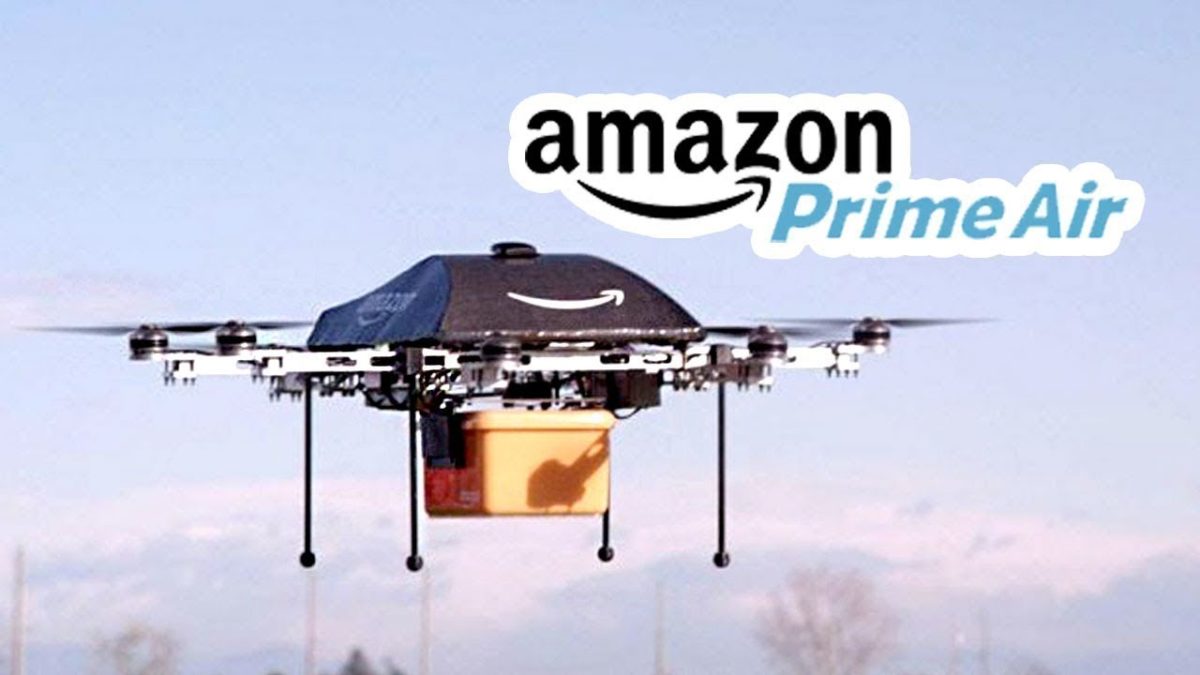Imagine a world in which you could order groceries 30 minutes ahead of cooking, and they would arrive right when you want to start. This is what could become reality in the foreseeable future.
Amazon started experimenting with Amazon Prime Air in 2016. They did this in the UK, where they run tests with autonomously flying drones which deliver packages. These drones can transport small packages with food and other products to people’s backyards. Amazon estimates they will be able to do this within 30 minutes from ordering time. This does not only mean you don’t have to go to the store for small grocery runs anymore, but also that you don’t have to plan your orders (a) day(s) ahead. What would this mean for the retail industry?
When this technology gets rolled out, other retailers might want to get on board. Consumers will become less and less incentives to visit physical grocery stores when delivery methods get more and more enhanced. Consumers are already turning to delivery services for weekly groceries and other products. The only things that stops them from placing orders for every separate meal, are delivery times and delivery costs. Amazon Prime Air is said to reduce delivery times tremendously to 30 minutes, and since they fly autonomously, delivery costs could also be reduced accordingly. Amazon Prime Air might even be included in the Amazon Prime prescription. (This yearly prescription is already extremely popular in the United States of America, where consumers are willing to pay over a hundred dollars per year for their orders to be delivered faster than usual.)
All in all, the day Amazon Prime Air will be available to all, will surely be a very special day. The way people do groceries will be revolutionized to a point where it’s almost completely effortless.


I agree and believe that drones will become an important part of the delivery business. Beside groceries, I can see many advantages in the medical world as well as technical replacements. However, there are some concerns about drone delivery which have to be explained as well. The main problems are theft, weather conditions, and weight limits. Drones are vulnerable to being intercepted which is especially problematic when carrying expensive or very important loads like life saving organs. Drones are not able to fly and land safely in all weather conditions. Especially rain and wind are problematic. Lastly, Amazon Prime drones are now able to carry around 2kg. When you need many groceries you will need to order multiple drones.
In the meantime, technology is evolving at a very fast pace. We can expect these challenges to be resolved somewhere in the future because the drone delivery has such high potential for the future.
http://www.alphr.com/the-future/1004520/droning-on-the-challenges-facing-drone-delivery
https://www.marketwatch.com/story/6-myths-about-amazon-prime-air-and-drone-delivery-debunked-2015-12-02
I believe bad weather is the most difficult problem to overcome, since traditional methods of transportation still have difficulty overcoming this as well. I agree with you that we can expect these challenges to be resolved somewhere in the future, but for now I think Amazon should focus on small groceries instead of on life saving organs.